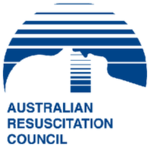Assessing the newborn
1.6. Assessing the newborn
From the moment of birth, the process of evaluating the newborn begins and does not end until transition is successfully completed. The first evaluation, which will determine if intervention is required, is based upon the newly born infant’s:
- Response to stimulation
- Breathing
- Muscle tone
Response to stimulation
- The stimulation of being born into the cool environment of the birth room and being dried is usually sufficient to stimulate most newborn infants to breathe.
- If the newborn does not respond to stimulation by breathing, the infant should be moved to the resuscitaire for further assessment and intervention.
Breathing
- Most newborns will establish regular respirations that are effective in maintaining the heart rate above 100 beats per minute.
- Apnoea, especially with hypotonia is a sign of severe compromise. The infant should be moved to the resuscitaire for further assessment and intervention.
Muscle tone
- Normal newborns will move their limbs and assume a posture of flexion.
- If the newborn remains hypotonic and is not moving, the newborn is likely to be severely compromised and should be moved to the resuscitaire for further assessment and intervention.
KEY POINTS |
|
Why don’t we use assessment of the infant’s colour to guide interventions?
- Newborn infants will take up to ten minutes of post natal age to look “pink”
- It is normal for newborn infants to appear “dusky” in the first few minutes of life
- No intervention is required if the infant is breathing effectively, has a heart rate above 100 bpm and has good muscle tone
Assessing colour has been shown to be difficult and a poor proxy for tissue oxygenation during the first minutes of life. In a study by O’Donnell, et al., (2007), experienced clinicians were shown videos of newborn infants and asked to state when the infant looked “pink”. The SpO2 at which individual infants were perceived to turn pink varied widely, ranging from a SpO2 of 10% to a SpO2 of 100%.
Immediate care of the uncompromised newborn
The normal newborn who is breathing or crying and has good muscle tone should be dried with a warm towel, placed skin- to -skin on the mother’s chest and covered with a warm blanket to maintain the infant’s body temperature.
If born in theatre, the infant should be dried and wrapped in clean, warm wraps and observed in a warm environment.
Suctioning of the mouth and oropharynx is not routinely required as normal newborns clear their own airway very effectively.
The newborn infant should have regular assessment of his breathing, heart rate, colour and tone. Apgar scores should be recorded at 1 and 5 minutes of age. Ongoing assessment of breathing, heart rate, tone, colour and temperature should continue at regular intervals for 24 hours after birth.
Timing of cord clamping
There is now good evidence that delaying/deferring cord clamping after birth, compared with immediate cord clamping is associated with a smoother transition to extra-uterine life, especially if the newborn infant has breathed before the cord is clamped.
Delayed Cord Clamping
ANZCOR 2021 |
|||||
|
INITIAL |
GESTATIONAL AGE |
RECOMMENDATION | CONDITION AT BIRTH | CORD MANAGEMENT | GOOD PRACTICE POINTS |
|
Vigorous |
All newborns | DCC for all infants |
|
Aim to delay cord clamping ≥ 60 seconds |
|
|
Aim to delay cord clamping ≥ 30-60 seconds
|
||||
| Non-vigorous | All newborns | Insufficient evidence to guide practice |
|
Cut the cord
Move the newborn to the resuscitaire |
|
ANZCOR Guideline 13.1 (2021)
Delaying or deferring cord clamping (DCC) has benefits for newborn babies during transition and the first 3-6 months after birth. Benefits include:
- Increased transfusion of blood from placenta to the newborn
- Increased cardiac output
- Higher haemoglobin level at birth
- Increased ferritin levels at six months of age
In animal studies, initiating ventilation prior to cord clamping (physiological-based cord clamping, [PBCC]) stabilised the cardiovascular transition at preterm delivery (Polglase et al, 2015). These studies demonstrate that the onset of ventilation is more critical in improving pulmonary blood flow and cardiac output than a specified length of time between birth and cord clamping (Hooper et al, 2016).
The following benefits of DCC in human preterm infants have been reported (ILCOR 2016)
- Improved stability in the immediate postnatal period compared with controls:
- Higher mean blood pressure and haemoglobin compared with controls
- Reduced risk of periventricular leukomalacia and intraventricular haemorrhage
- Reduced risk of necrotising enterocolitis
- Reduced need for blood transfusion
Uncertainties in compromised newborns
- No human studies to guide practice in depressed preterm infants, as those at high risk of requiring resuscitation were excluded or withdrawn from randomised controlled trials to date.
- Unclear whether placental circulation can be relied on in a newborn who has not breathed soon after birth.
- Risk that a depressed newborn may have experienced impaired placental gas exchange before birth.
Resuscitation takes priority over delayed cord clamping until further evidence is available to guide practice.
Cord Milking (Stripping)
ANZCOR 2021 |
||
| Intact cord | Term and ≥ 34 weeks* | Insufficient evidence of milking the intact cord |
| <28+0 weeks’ gestation | ANZCOR suggest against intact cord milking | |
| Cut cord | All gestational age newborns | ANZCOR suggest against milking a cut cord |
ANZCOR Guideline 13.1 (2021)
* Cord milking in preterm newborns >28 weeks’ gestation may be considered on an individual basis or in a research setting.
| Previous | Next |

